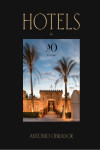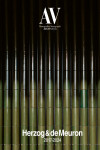LOOS: ADOLF LOOS
SARNITZ, AUGUST
Datos técnicos
- ISBN 9783836544672
- Año Edición 2017
- Páginas 96
- Encuadernación Tapa Dura
- Idioma Inglés
Sinopsis
Adolf Loos (1870-1933) was a flamboyant character whose presence in the cultural hotbed of early 1900s Vienna galvanized the countrys architectural landscape. An early, impassioned advocate of modernism, he all-out rejected the grand Secessionist aesthetic prevalent at the time, as well as any hallmarks of the European fin de siècle. Instead, in lectures and essays, such as the milestone Ornament and Crime of 1908, Loos articulated his 'passion for smooth and precious surfaces.' He advocated that architectural ornamentation was, by its nature, ephemeral'locked into current trends and styles, and therefore quickly dated. Loos, himself a Classicist at heart, argued instead for simple, timeless designs with time-honored aesthetic and structural qualities. In this essential introduction, we explore Looss writings, projects, and legacy, from his key concept of 'spatial plan' architecture to his rejection of decorative fripperies in favor of opulent, fine-quality materials and crisp lines. Featured projects include Viennas Café Museum (1899), the fashion[SEARCHREPLACE_61]Knize (1913), and the controversial Loos House (1912), which Emperor Franz Joseph I would refuse to travel past, bristling with rage at its insolently minimalist aesthetic.
Otros libros que te pueden interesar
- ¿Quiénes somos?
- Gastos de envío
- Política de privacidad
- Políticas de devolución y anulación
- Condiciones Generales de contratación
- Contacto
2025 © Vuestros Libros Siglo XXI | Desarrollo Web Factor Ideas










